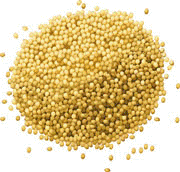International Sorghum and Millet Collaborative Research Support Program (INTSORMIL CRSP)
Date of this Version
9-5-2008
Document Type
Article
Citation
INTSORMIL Impact (September 5, 2008)
Abstract
Insect pests destroy more than 35% of stored grain worldwide and probably even more in Africa. Considering the current global food shortage this is a tremendous loss. To mitigate losses caused by insects in stored sorghum grain, INTSORMIL scientist Bonnie Pendleton of West Texas A&M University is collaborating with African entomologists to develop management strategies. Storage conditions are critical in preventing losses due to pests. A survey in Mali by IER scientist Niamoye Yaro Diarisso found that farmers in the Koulikoro and Ségou regions thresh sorghum and millet and store it in the form of grain. However, in the Sikasso region the entire sorghum panicle or millet spike is stored.
Types of storage structures vary within Mali. In the Koulikoro and Ségou regions structures are made of plant material (photo right). Insects can readily penetrate these structures. In the Sikasso region walls of storage structures are made of clay and cement, clay on rock or clay alone (photo center above).
The Mali survey indicated that farmers cannot afford to use insecticides to control storage insects. However, 36% use local plants (botanicals), primarily bénéfi n, Hyptis sp.; neem, Azadirachta indica and tamarin, Tamarindus indica, to control pests in granaries. INTSORMIL scientists are identifying additional botanicals that provide effective and low-cost control of storage pests. In IER studies 31% fewer grains were attacked when treated with powder of the leaves of Acacia nigricans (photo left) as compared to nontreated grains.


